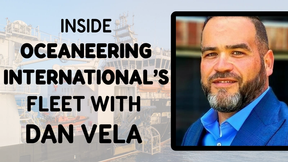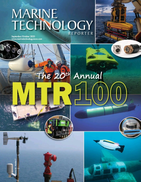Marine Technology Reporter Blogs - power
Tidal Energy in Scotland - “The Crown Jewel of The Pentland Firth”

Construction will soon begin on what is to be the largest tidal turbine energy project in Europe, following the Scottish government’s official approval of the concept and construction plans. The tidal stream project let by MeyGen Ltd. is at the forefront of world tidal energy development and will harvest the tidal resource from the strong tidal streams present along the Pentland Firth in an area that lies in the channel between the island of Stroma (part of the Orkney chain of islands) and the northeasterly tip of the Scottish mainland, encompassing almost 3.5km2 of fast flowing water. MeyGen’s goal is to deliver a fully operational, 398MW renewable energy plant powered purely by the tide, generating the equivalent electricity to power around 40,000 Scottish homes by 2020.
Wave Power – The Pelamis Concept

Wave energy is produced when electricity generators are placed on the surface of the ocean. The energy provided is most often used in desalination plants, power plants and water pumps. Energy output is determined by wave height, wave speed, wavelength, and water density. Waves are generated by the wind as it blows across the sea surface, so that energy is transferred from the wind to the waves. Wave energy is sometimes confused with tidal energy, which is quite different. Waves travel vast distances across oceans at great speed. The longer and stronger the wind blows over the sea surface, the higher, longer, faster and more powerful are the waves.
Ocean Thermal Energy Conversion – Renewable Energy from the Sea

According to OTEC International LLC (OTI), in 1870, Jules Verne introduced the concept of ocean thermal energy conversion (OTEC) in his book, Twenty Thousand Leagues Under the Sea. Within a decade, American, French and Italian scientists are said to have been working on the concept but the Frenchman, physicist Jacques-Arsene d’Arsonval, is generally credited as the father of the concept for using ocean temperature differences to create power. “I owe it all to the ocean; it produces electricity, and electricity gives heat, light, motion, and, in a word, life to the Nautilus.” Jules Verne, Twenty Thousand Leagues Under the Sea. D’Arsonval’s student, Georges Claude, built the first OTEC power plant in 1930 in Cuba, which produced 22 kilowatts of electricity.
Subsea Power Grid to Enable Large-Scale Subsea Processing

The future of O&G recovery most likely lies in deepwater reservoirs. Subsea processing opens the door to more cost-efficient developments, especially for long step-outs and, marginal and deepwater fields. Large-scale seabed processing facilities will require a subsea power grid system that is able to operate for long step-outs with total reliability withstanding extreme pressure and temperatures. As technology leader on land-based power grids, Siemens has configured complex power transmissions to suite multiple subsea operations. Siemens also has broad experience with subsea power concept studies as well as experience producing deep-sea transformers and compressors and ten years experience on subsea control and communication.


 August 2025
August 2025



